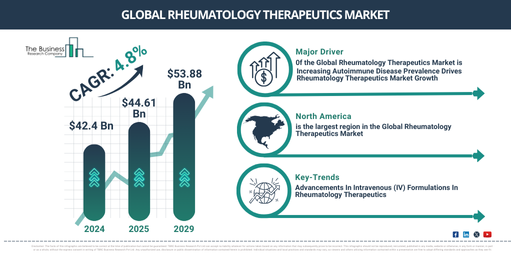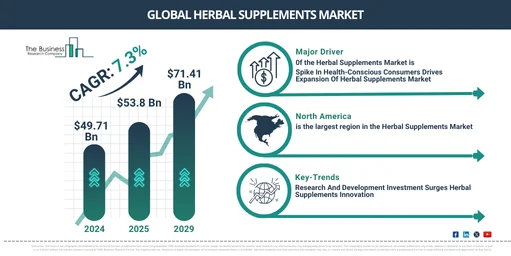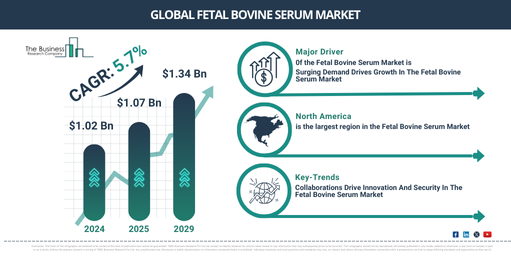Key Drivers and Opportunities in the Rheumatology Therapeutics Market: Insights into Trends and Growth
Updated 2025 Market Reports Released: Trends, Forecasts to 2034 – Early Purchase Your Competitive Edge Today!
What Long-Term Growth Rate is Expected for the Rheumatology Therapeutics Market Between 2025 and 2034?
The market for rheumatology therapeutics has seen considerable growth in previous years. It is predicted to expand from $42.4 billion in 2024 to $44.61 billion in 2025, exhibiting a compound annual growth rate (CAGR) of 5.2%. Factors contributing to this historical growth include a higher incidence of rheumatologic conditions, a surge in the global elderly population, enhanced knowledge of treatment alternatives, advances in biological treatment methods, and widened access to healthcare in burgeoning markets.
In the coming years, the rheumatology therapeutics market is projected to experience consistent growth, with its value predicted to reach $53.88 billion by 2029, at a compound annual growth rate (CAGR) of 4.8%. This growth for the upcoming years can be linked to the shift towards more individualized medicine strategies, increased use of biosimilars in rheumatology, amplified investment in research and development, incorporation of digital health tech, and the approval of innovative therapies by regulators. In the projection period, key trends to watch include the growth of telemedicine and distant observation solutions, the widening of targeted therapies for specific rheumatic disorders, a focus on care models that prioritize the patient, the extension of biologic treatments beyond monoclonal antibodies, and the adoption of value-based pricing models.
Which Factors Are Enhancing the Growth of the Rheumatology Therapeutics Market?
The escalation in the frequency of autoimmune diseases is anticipated to accelerate the expansion of the rheumatology therapeutics market in the future. Autoimmune diseases arise when the immune system erroneously harms the body’s own tissues. This mounting occurrence is due to an amalgamation of genetic, environmental, and lifestyle influences, coupled with heightened awareness and advanced diagnostic capabilities. There is a need for rheumatology therapeutics to control inflammation, relieve symptoms and stave off damage to joints and tissues caused by the immune system’s assault on the body in autoimmune diseases. For example, the Australian Institute of Health and Welfare, a government agency based in Australia, revealed in June 2024 that approximately 514,000 inhabitants of Australia, translating to 2.0% of the population, were thought to be suffering from rheumatoid arthritis back in 2022. The burden of this ailment represented 2.0% of the total disease load and 16% of the burden from all musculoskeletal disorders in 2023. Hence, the upward trend in the incidence of autoimmune diseases is fuelling the surge of the rheumatology therapeutics market.
Get Your Free Sample of the Global Rheumatology Therapeutics Market Report Now!
https://www.thebusinessresearchcompany.com/sample.aspx?id=17246&type=smp
What Are the Key Firms That Are Driving Transformation in the Rheumatology Therapeutics Market?
Major companies operating in the rheumatology therapeutics market are:
• Pfizer Inc.
• Johnson & Johnson
• Roche Holding AG
• Merck & Co. Inc.
• AbbVie Inc.
What Current Trends in the Rheumatology Therapeutics Market Should Industry Players Pay Attention To?
Leading firms in the rheumatology therapeutics market are transforming therapy effectiveness and patient comfort by introducing novel solutions like intravenous (IV) formulations. IV formulations are medications or substances directly applied into a vein using a needle or a catheter. For instance, a development in October 2023 by the Swiss pharmaceutical firm Novartis AG saw the US Food and Drug Administration (FDA) approval of Cosentyx, an IV formulation. This version of Cosentyx received exclusive endorsement for use in adults suffering from psoriatic arthritis (PsA), ankylosing spondylitis (AS), and non-radiographic axial spondyloarthritis (nr-axSpA). It operates by selectively inhibiting interleukin-17A (IL-17A) and remains the only non-tumor necrosis factor alpha (TNF-α) IV therapy for these disorders.
Get Instant Access to the Global Rheumatology Therapeutics Market Report with Swift Delivery!
https://www.thebusinessresearchcompany.com/report/rheumatology-therapeutics-global-market-report
Which Segments Play a Crucial Role in the Expansion of the Rheumatology Therapeutics Market?
The rheumatology therapeutics market covered in this report is segmented –
1) By Drug Class: Disease Modifying Anti-Rheumatic Drugs, Nonsteroidal Anti-Inflammatory Drugs, Corticosteroids, Uric Acid Drugs, Other Drugs Classes
2) By Distribution Channel: Hospital Pharmacy, Retail Pharmacy, Online Pharmacy
3) By Disease Indication: Rheumatoid Arthritis, Osteoarthritis, Gout, Psoriatic Arthritis, Ankylosing Spondylitis, Other Disease Indications
Subsegments:
1) By Disease Modifying Anti-Rheumatic Drugs (DMARDs): Conventional Synthetic DMARDs, Biologic DMARDs, Targeted Synthetic DMARDs
2) By Nonsteroidal Anti-Inflammatory Drugs (NSAIDs): COX-2 Inhibitors, Traditional NSAIDs
3) By Corticosteroids: Oral Corticosteroids, Injectable Corticosteroids, Topical Corticosteroids
4) By Uric Acid Drugs: Uric Acid Lowering Agents, Uricosuric Agents, Pegloticase
5) By Other Drug Classes: Immunosuppressants, Biologic Therapies, Analgesics
What Regions Are Driving Expansion in the Rheumatology Therapeutics Market?
North America was the largest region in the rheumatology therapeutics market in 2023. Asia-Pacific is expected to be the fastest-growing region in the forecast period. The regions covered in the rheumatology therapeutics market report are Asia-Pacific, Western Europe, Eastern Europe, North America, South America, Middle East, Africa.
What Key Parameters Define the Rheumatology Therapeutics Market’s Scope?
Rheumatology therapeutics encompass treatments aimed at managing and alleviating symptoms of rheumatic diseases, such as arthritis, lupus, and gout. These therapies include medications, such as anti-inflammatory drugs, disease-modifying antirheumatic drugs (DMARDs), and biologics, as well as physical therapy and lifestyle modifications. The goal is to reduce inflammation, control pain, and improve the quality of life for patients.
Browse Through More Similar Reports By The Business Research Company:
Cystic Fibrosis (CF) Therapeutics Global Market Report 2024
Hepatitis Therapeutics Global Market Report 2024
https://www.thebusinessresearchcompany.com/report/hepatitis-therapeutics-global-market-report
Peptide Therapeutics Global Market Report 2024
https://www.thebusinessresearchcompany.com/report/peptide-therapeutics-global-market-report
About The Business Research Company:
With over 15000+ reports from 27 industries covering 60+ geographies, The Business Research Company has built a reputation for offering comprehensive, data-rich research and insights. Armed with 1,500,000 datasets, the optimistic contribution of in-depth secondary research, and unique insights from industry leaders, you can get the information you need to stay ahead in the game.
Contact us at:
The Business Research Company: https://www.thebusinessresearchcompany.com/
Americas +1 3156230293
Asia +44 2071930708
Europe +44 2071930708
Email us at [email protected]
Follow us on:
LinkedIn: https://in.linkedin.com/company/the-business-research-company
YouTube: https://www.youtube.com/channel/UC24_fI0rV8cR5DxlCpgmyFQ
Global Market Model: https://www.thebusinessresearchcompany.com/global-market-model
Found this article helpful? Share it on:



